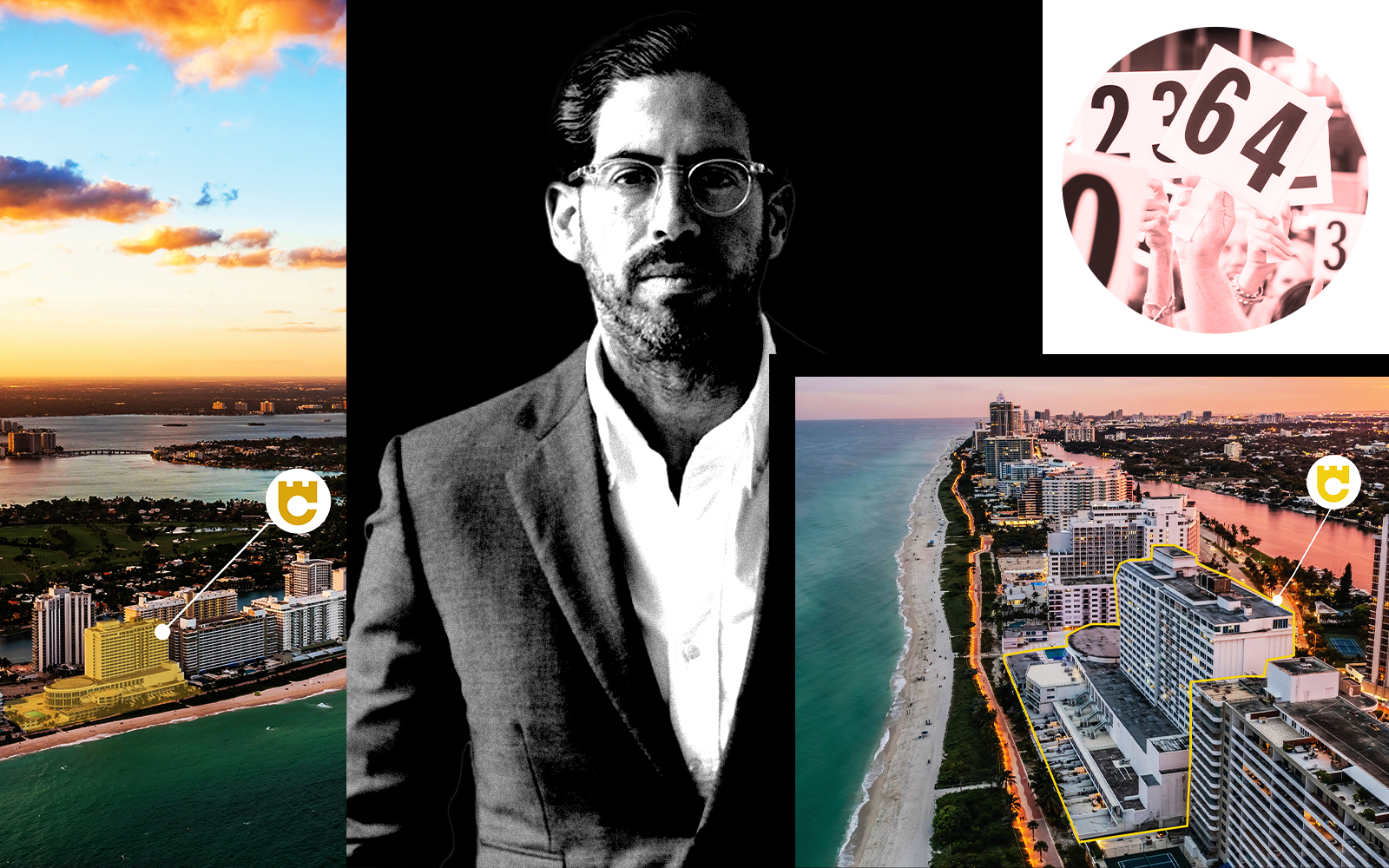Developer Camilo Miguel Jr. is trying to acquire another oceanfront condo building in Miami Beach, The Real Deal has learned. It’s near the site of his planned Perigon development and the bulk buyout at Amethyst he is in the midst of negotiating.
Miguel’s Mast Capital sent contracts to the owners at Imperial House, a 15-story 127-unit condominium at 5255 Collins Avenue, to buy out the entire building, according to a copy of one of the offers, obtained by TRD. The building also includes cabanas and boat slips.
The Coconut Grove-based developer is aggressively pursuing condo terminations in the area. In the letter to owners, Mast said it’s negotiating with two other buildings.
One of those is Amethyst, an 11-story, 120-unit condo building at 5313 Collins Avenue, where Mast Capital’s buyout has dragged on for years. The developer is missing a group of about 28 owners. This summer Mast sent new offers to them after it terminated an earlier agreement. Mast is also the target of two lawsuits over the deal — one from a pair of sellers in contract with Mast and another from the condo association.
Mast successfully completed the buyout and termination of La Costa, at 5333 Collins Avenue, the building next door to Amethyst. The firm partnered with billionaire Barry Sternlicht’s Starwood Capital Group on the planned project called The Perigon, a luxury boutique condo. La Costa, which was declared unsafe by the city in 2021, following the deadly condo collapse in Surfside, is being demolished.
At Imperial House, Mast has until September 2024 to receive signed contracts from at least 95 percent of the unit owners, according to the developer’s letter. The deal would be contingent on Mast securing 95 percent of units. Florida law allows 5 percent of a building’s ownership to challenge condo terminations, which is why developers may look to secure just over 95 percent of a building’s units.
Imperial House was built in 1963, which means it’s up for its 60-year recertification. The building received a permit in June for concrete restoration, waterproofing and exterior paint, city records show.
Mast’s offers vary depending on the location and size of the condo, according to sources. Units range from one-bedrooms to four-bedrooms.
Liana Rivera of Quadra Real Estate + Advisory represents the developer in the contracts. She did not immediately respond to a request for comment.
A spokesperson for Mast didn’t comment specifically about Imperial House, but said in a statement that the company is “often contacted by unit owners who want us to pursue and acquire their building.”
Mast is one of a handful of developers pursuing older buildings on waterfront land in Miami Beach and nearby cities. Related Group, 13th Floor Investments, Two Roads Development, Bruce Eichner and others have also been active. Though developers have long used condo buyouts to acquire land and build new condo projects on the site of older buildings, many refined their strategies following the Surfside collapse that killed 98 people two years ago.
Condo owners and associations may be more receptive to developers’ offers now that they are under pressure to comply with new state law that ultimately makes it more expensive to live in a condo. The law requires buildings to have a structural integrity reserve study completed, and associations must fully fund their reserves by the start of 2025. Rising insurance premiums and a limited pool of insurers have also put an unsustainable strain on many owners.
Bilzin Sumberg attorney Anthony De Yurre said many condo buildings are having trouble finding coverage, and premiums for some have doubled or tripled.
Developers look for waterfront buildings in South Florida on large lots. De Yurre is working with developers to identify buildings by age, see if they have open violations with the city, and determine how many units are homesteaded before approaching owners.
“Once [developers] see how the model works, then they’re willing to make it more of their business plan,” he said. “They become more proactive instead of reactive.”
Read more



